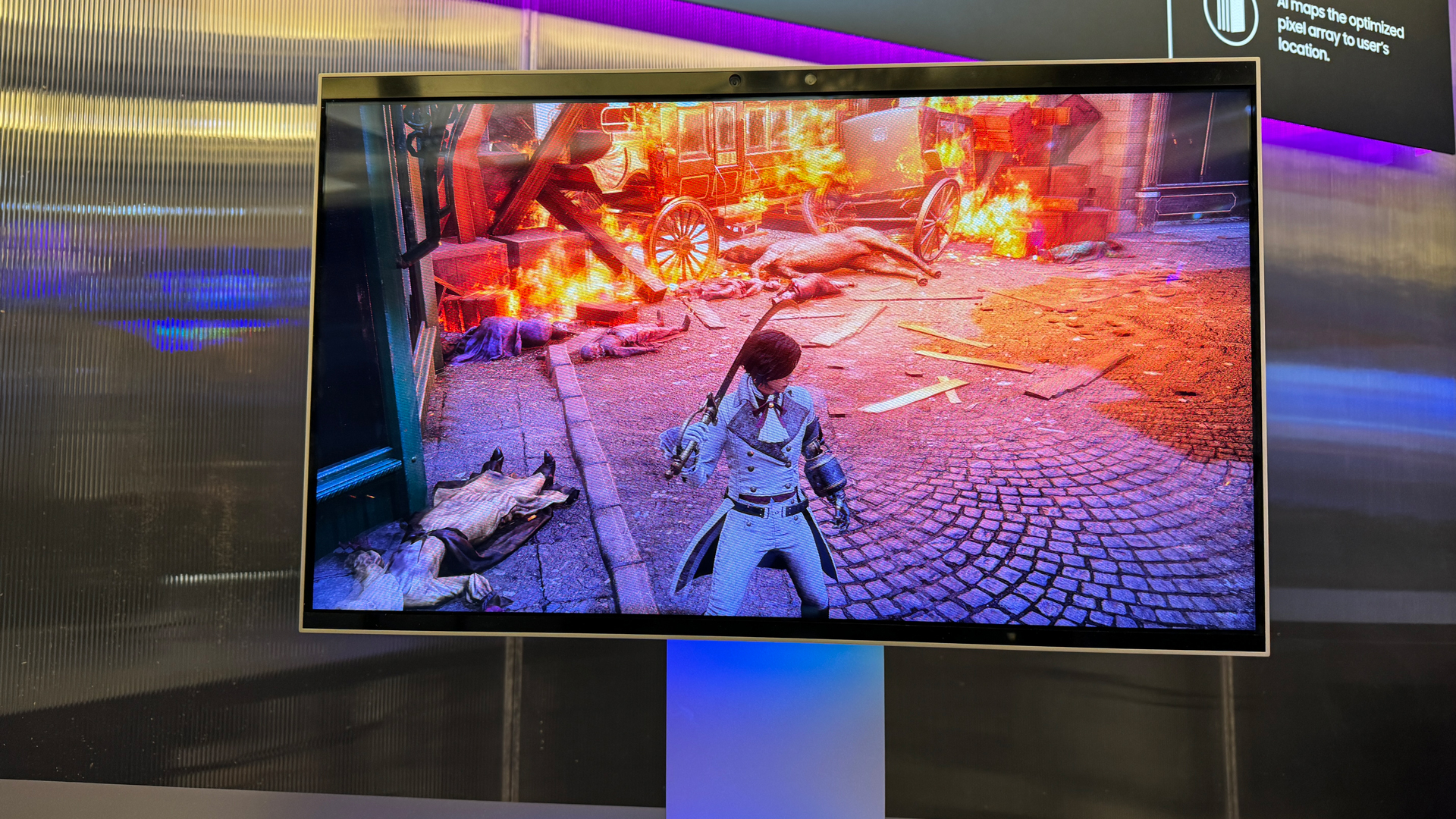
3D gaming and TVs are nothing new, but they usually require glasses and aren't practical for 2D work. Samsung's new 2D/3D display panel changes that and provides the best glasses-free 3D gaming I have ever seen.
Unveiled here in Las Vegas at CES 2024, Samsung's 2D/3D automatically convertible panel is essentially a desktop computer monitor with a secret. During the workday, it's a mild-mannered roughly 24-inch display that should handle all your desktop productivity tasks. At night (or when the boss isn't watching) it turns into a gaming display unlike almost any other.
The display, which is a bit thicker than a standard LCD or LED display, hides a secret. It has lenticular technology. The centuries-old image manipulation system uses prisms to show you different images depending on where you stand (or move the image). Shift left and you see one image, move right and see a different one. The shift is often subtle, like making a figure appear to weep when you step to the left.
Samsung's display, though, takes it further. At the top of the screen bezel is a pair of sensors that track your head and eye movement. Built-in AI uses that information to adjust the pixel array in real-time to match your view and give you a full 3D effect.

In practice, this meant that when I sat down to play Lies of P on this 3D display, I was confronted with the titular character (Pinocchio) somehow standing outside the screen and closer to me. Before him was a blazing fire and nearer to me and floating outside the display were dozens of burning embers. I immediately tried to reach out and touch them.
Enjoying an effect of this quality while sitting just a foot away from the screen was a first for me. As long as I maintained eye contact with the display the 3D was almost perfect and carried on as I played.
However, if I shifted my gaze, or looked behind me, the sensors lost track of my eyes and when I looked back at the game, the 3D effect was off and the image became jarring. Still, since people often game for hours at a time without ever looking away from the screen, I could see this becoming a compelling immersive gaming experience. Even more so, the fact that I didn't have to wear a VR headset or special glasses makes it a far more accessible option for 3D gaming.

While you can see a little bit of the 3D effect if you view the display from an angle, the effect is multiplied significantly if you sit right in front of it and let the sensors track you. It's also impossible to convey the experience properly through photos and videos because cameras have just one lens and are not (unless they're spatial) capable of capturing 3D information.
There are other lenticular-based 3D displays out there, like Magentic 3D, but the screens are not desktop-sized and, for now, lack eye tracking, which significantly enhances the overall effect.
You won't be playing on Samsung's breakthrough 2D/3D display any time soon. Samsung could offer no release timetable or possible pricing, though I bet this would be one of the more expensive desktop monitors on the market. But you can't put a price on immersion, amirite?
Check out our CES 2024 hub for all the latest news from the show as it happens. We'll be covering everything from 8K TVs and foldable displays to new phones, laptops, smart home gadgets, and the latest in AI, so stick with us for the big stories.
And don’t forget to follow us on TikTok for the latest from the CES show floor!







